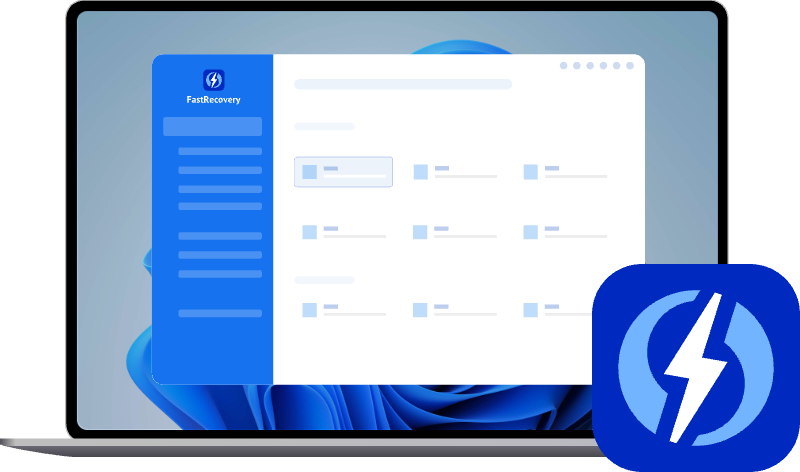6 Ways to Recover Permanently Deleted Files in Windows 10
You can easily recover permanently deleted files in Windows 10 using 6 effective methods, such as data recovery software, Windows backup, CMD, etc., with step-by-step instructions below.
Is it possible to recover permanently deleted files in Windows 10?
You may ask “Where do the permanently deleted files go if not in Recycle Bin?”. Actually, when you “delete” a file, your computer logically deletes it. Still, the file will stay in its original place. What is genuinely wiped is the pointer to the file. Meanwhile, the space is freed up, and ready to be used by another file.
So, before the space is overwritten, you can still get access to your deleted files. Even if you have emptied the Recycle Bin, you could also recover items deleted from Recycle Bin in 6 proven methods. Please check if you really deleted files permanently first.
Check if you permanently deleted files in Windows 10
Sometimes, users may just click the “Deleted” button when deleting files in Windows 10 but mistakenly think that they have permanently deleted files. Below are some permanent deletion operations:
- Delete a file normally, then delete it again in the Recycle Bin.
- Intentionally or accidentally emptied the Recycle Bin.
- Use the “Shift+DEL” keys.
- Use the “del” command prompt.
- Delete a file larger than 8998 MB. It will bypass the Recycle Bin and be deleted permanently.
- Connect an external storage device and delete files from the external devices, like external HDD, USB, SD card, etc.
How to recover permanently deleted files in Windows 10
Yeah, there are many useful methods to recover permanently deleted files in Windows 10. You can attempt to use data recovery software, Windows backup, CMD, etc., with step-by-step instructions below.
Method 1. Recover permanently deleted files with data recovery software 🔥
AOMEI FastRecovery will be your second-to-none choice to restore permanently deleted files in Windows 11/10/8/7 SP1 & Server. It will scan your disks automatically to find all recoverable data. You can even recover files during the scanning process.
❤❤❤ Why Choose AOMEI FastRecovery?
- High recovery rate and fast speed: Scan your disk quickly and deeply with its effective scanning algorithms, which ensure a high success rate.
- Support 1000+ file formats: Recover word documents, excel, ppt, png, jpg, mp4, mov, doc, xlsx, pdf, ppt, html, zip, etc., from documents to images, audios, videos, and more.
- Easy and convenient: During scanning, you can search, filter, and preview files to get what you want quickly and precisely. Recover specific files or folders, not all.
- All-inclusive: Apply to data loss due to accidental deletion, recycle bin empty, disk formatting, system crashes, viruses, etc.
Now, click the download button to get started.
1. Start the program > hover the mouse over the partition where you have permanently deleted files > click Scan.
Step 2. It supports search/filter/preview data during the scanning process. You can also directly select the desired files and recover them without waiting for the final scanning result.
- Filter: Specify the Type/Size to target your search, for example, to view all Documents whose sizes are between 1 MB to 512 MB.
- Search: Locate the wanted files by inputting the file name or extension in the search box.
- Preview: Preview files in a clear thumbnail, such as wav,ico, jpg, png, bmp, jpeg, tif, svg, gif, ico, mp4, mp3, txt, xlsx, pdf, ini, docx, etc.
Step 3. Once found, select the files you want to recover and click Recover to start the file recovery process.
-
Please choose a place different from the source drive/partition to store your recovered data. Otherwise, your data will be overwritten.
-
The free edition only supports recovering permanently deleted files in Windows 10 over 500MB. Once exceeded, please upgrade to AOMEI FastRecovery Pro or Technician edition.
Also, you can use AOMEI FastRecovery to get data back from other devices, like recover files from external hard drives, USB drives, SD cards, etc.
Method 2. Restore permanently deleted files from File History backup
To get back your permanently deleted files, you could also take advantage of an embodied Windows backup utility, File History, which will save copies of their files and allow you to restore them in data loss scenarios.
Step 1. Input Control Panel in the Windows search bar > start it > click System and Security.
Step 2. Click File History.
Step 3. Click Restore personal files.
Step 4. Select the deleted files you need and then click the green restore button.
Method 3. Restore the previous version of files in Windows
The Previous Versions feature is another accessible feature to bring back permanently deleted files. You need to activate the File History or System Restore feature in advance.
Step 1. Start File Explorer. Then, navigate to the folder containing your permanently deleted files.
Step 2. Right-click on the permanently deleted files and select Properties > Previous Versions.
Step 3. Click Restore to recover the data as you like. For instance, if you choose a Word document, you can find previous version of Word documents. You can also click the drop-down menu next to Restore and select Open to preview them.
Method 4. Get files permanently deleted back from Backup and Restore
An exclusive built-in backup tool in Windows PC, Backup and Restore, can also help recover permanently deleted files in Windows 10. It supports backup & restore files on the local drives as file copies in case file loss occurs.
Step 1. Go to “Control Panel” > “System and Security” and select “Backup and Restore (Windows 7).”
Step 2. Click “Restore my files”. If you haven’t made backups yet, you cannot restore files using this app.
Step 3. Select the Browse for files/Browse for folders option to locate your wanted data.
Step 4. You can store your retrieved folders in your destination path or keep them in the original location.
Method 5. Retrieve permanently deleted files using Windows File Recovery
Without backups, you can also restore permanently deleted files in Windows 10 using the command line utility. Microsoft has provided an official tool named Windows File Recovery, which requires you to have some computer expertise.
Before using this tool, you need to figure out your file system, the source drive & target place, recovery mode & switches.
🔹To check your File System, go to This PC > right-click on the drive that contains the deleted files> click Properties.
🔹To decide which mode to use, please refer to the chart below.
| File system | Scenarios | modes |
| NTFS | Deleted recently | Regular |
| NTFS | Deleted for a while | Extensive |
| NTFS | Formatted disk | Extensive |
| NTFS | Corrupted disk | Extensive |
| FAT and exFAT | Any | Extensive |
🔹To filter the scanning range, use these switches.
| Switches | Meaning | Supported mode(s) |
| /n | Filter the scan range: scans for a specific file with its file name/path/type, etc. | All |
| /y: | Recover specific extension groups. | Signature |
| /k | Recovers system files. | NTFS Segment |
For details, check tutorial on how to use Windows File Recovery.
Step 1. Go to Microsoft Store > search for Windows File recovery > click Get.
Step 2. Click Open. Choose recovery mode & switches according to your data loss scenarios. If you have just permanently deleted your files, please choose Regular Mode. If the files are deleted for a while, please use Extensive Mode.
winfr source-drive: destination-drive: [/mode] [/switches]
Now, let’s take an example, if you have just permanently deleted your files by “Shift+Del”, now you are going to recover jpg files from a folder named “pics” under C: Drive to D: drive. Then you need to input the following command and type y to continue.
Winfr C: D: /n \Users\pics\*.jpg
-
When meeting the error: "Windows File Recovery there was an error parsing your command", please seek help from the tutorial.
Step 3. Wait for the recovery, then a recovery folder will be created in the destination drive you have chosen.
-
It is advisable to start Windows File Recovery in Microsoft Store.
-
The default recovery mode is Regular Mode.
-
If the Windows File Recovery stuck at 99%, please check the troubleshooting tutorial to fix it.
Way 6: Bring permanently deleted files back using CMD
Windows also contains a Command Prompt window with a list of commands you can use, such as chkdsk, atttrib to recover hidden files in Windows 10. Sometimes, your files are simply hidden instead of permanently deleted.
Step 1. Open a Command Prompt window by typing cmd in the search box and selecting Run as administrator.
Step 2. Type chkdsk C: /f / r and press Enter.
Step 3. Type Y to continue. It will scan and fix any disk error
Step 4. Type attrib –h –r –s /s /d C: *.* and press Enter to show hidden files or folders.
Wrapping up
You can easily recover permanently deleted files in Windows 10 with the above methods. Among them, using data recovery software will be the easiest method. It will directly scan your disk for recoverable files and allows you to filter and locate your files quickly by specifying a specific type (e.g.: recover PDF files), date modified, and size.
If you are worried about any precious data loss in the future, the best practice is to backup them immediately after recovery. To keep all the changes made later, it's suggested to set a scheduled backup task, such as daily, weekly, monthly, etc. Try effective Windows backup software - AOMEI Backupper Standard to help you!

